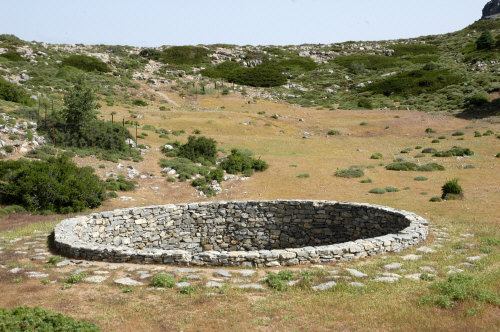|

THE
ICE-MAKERS
In the account of a hunting party that took
place in Coto de Doñana, in the Spring of
1624, offered by the Duke of Medina Sidonia
to King Philip IV, attended by 1,200 guests,
it says literally: “Bring every day six
loads of snow from Ronda on forty six
mules".
The conservation of food has been a serious
problem until quite recent times. Ice
production and cold-storage chambers are a
modern advance that until then was
substituted by the use of brine, marinades,
preserves or snow. Progress has brought
about the disappearance of what was surely
one of the most unique trades in the Sierra
de las Nieves: the Ice-Maker.
.jpg)
The tasks of the ice-maker started in
Spring, after the last snows. First the snow
had to be dug out with spades and
transported to the snow pits where they were
pressed with large wooden rammer until they
turned into ice. A layer of straw was placed
on top of every half-metre of snow. There
was a drainage hole at the bottom to drain
away the melt-water, as this would spoil the
conservation of the snow. The snow pits were
circular in shape, built with walls of
stone, preferably in the shade and facing
north, in order to obtain the best
temperature conditions for preserving the
ice. The hard work involved in digging out
the snow with a spade and dragging it to the
pits was alleviated in part by the warmth of
the fire that was permanently lit inside the
little huts.
.jpg)
In summer, it was transported by pack
animals led by muleteers through the whole
province of Malaga and other parts of
Andalusia. To transport the ice, it was
prepared in sacks of esparto grass weighing
50 kilos, surrounded by thin straw and
bracken. It was transported at night to
prevent the load from melting. Although ice
was distributed throughout the year, most of
the trade was carried out between the months
of May and October.

From 1870 onwards the trade went into
decline, and disappeared during the 30’s of
the last century. The industry fell into
disuse with the first ice-producing
machines, the brainchild of Tellier,
inventor of industrial freezing.

The ice-making pits are located in the
districts of Yunquera and Tolox (Málaga), in
the area known as Puerto de los Ventisqueros
in the Sierra de las Nieves, at an altitude
of 1,600 m. They are circular in shape with
a diameter of 8-10 metres and a depth of
five metres. Nowadays there are still
vestiges of those snow pits, although only
some of them have been restored or rebuilt
in order to preserve the historical memory
of this trade that, like many others, has
been swallowed up by progress.
|